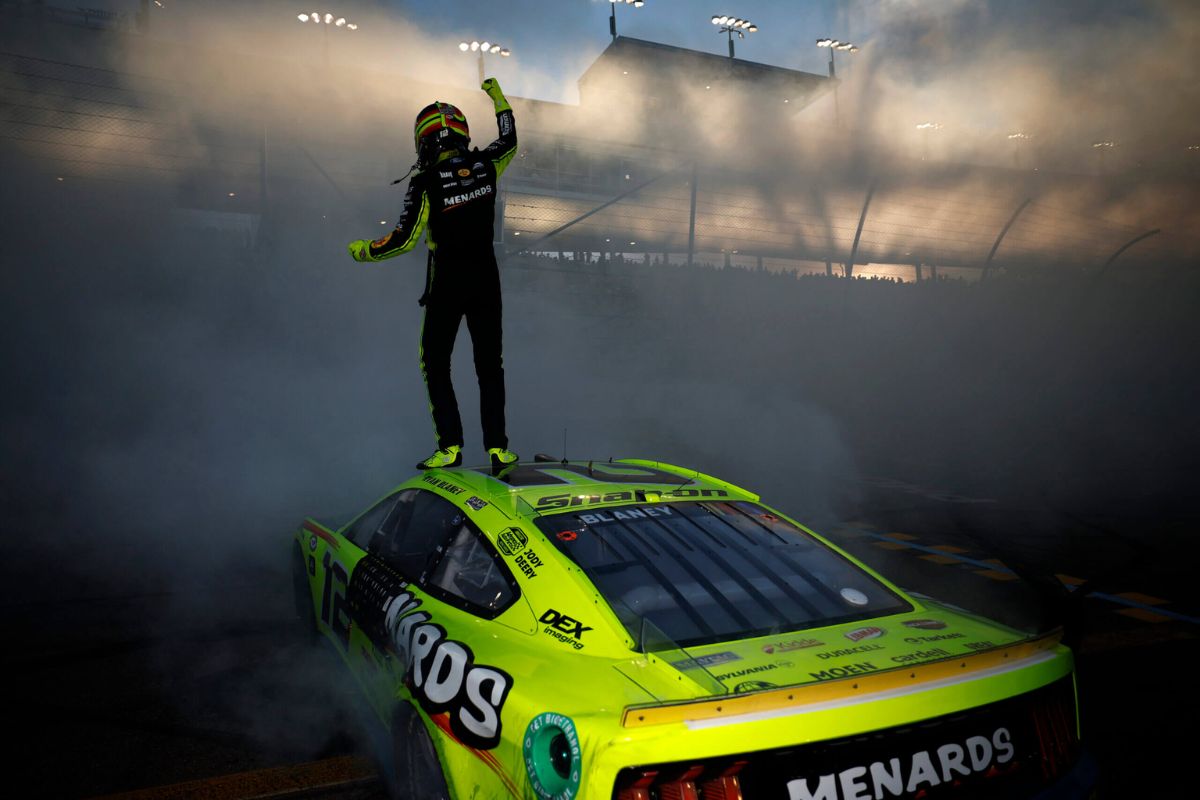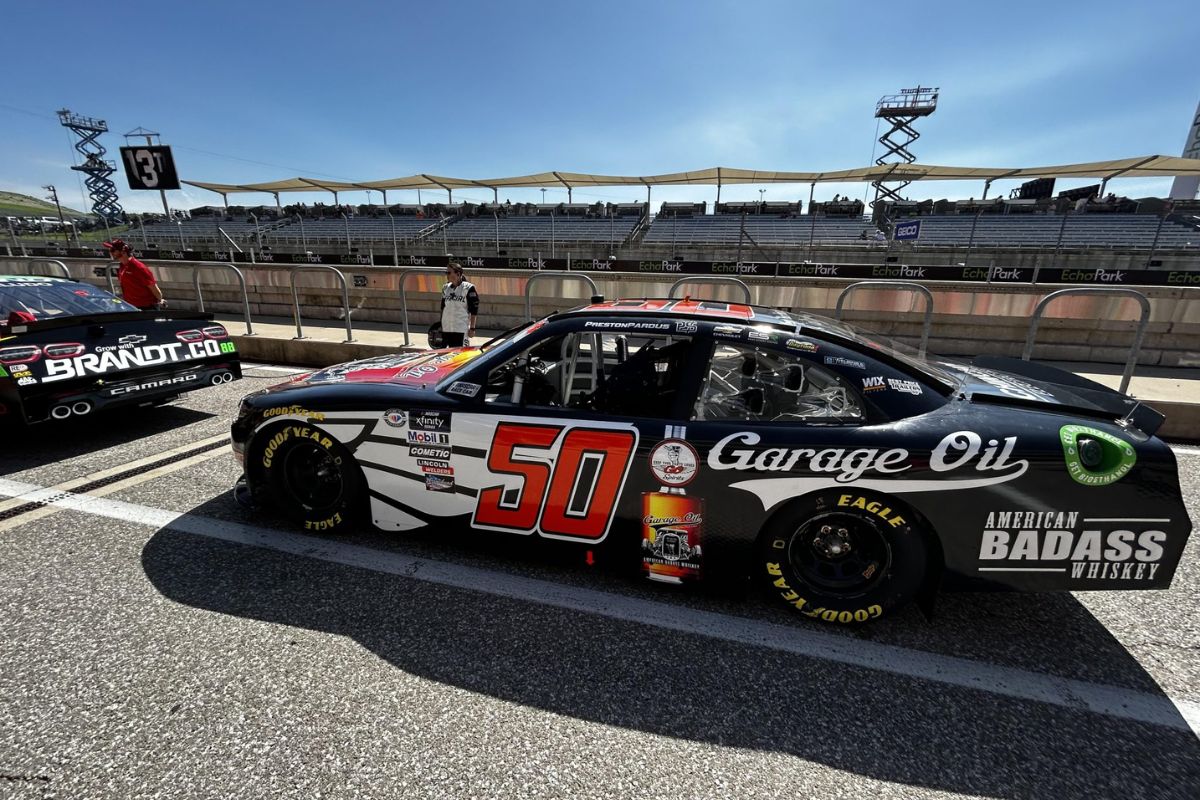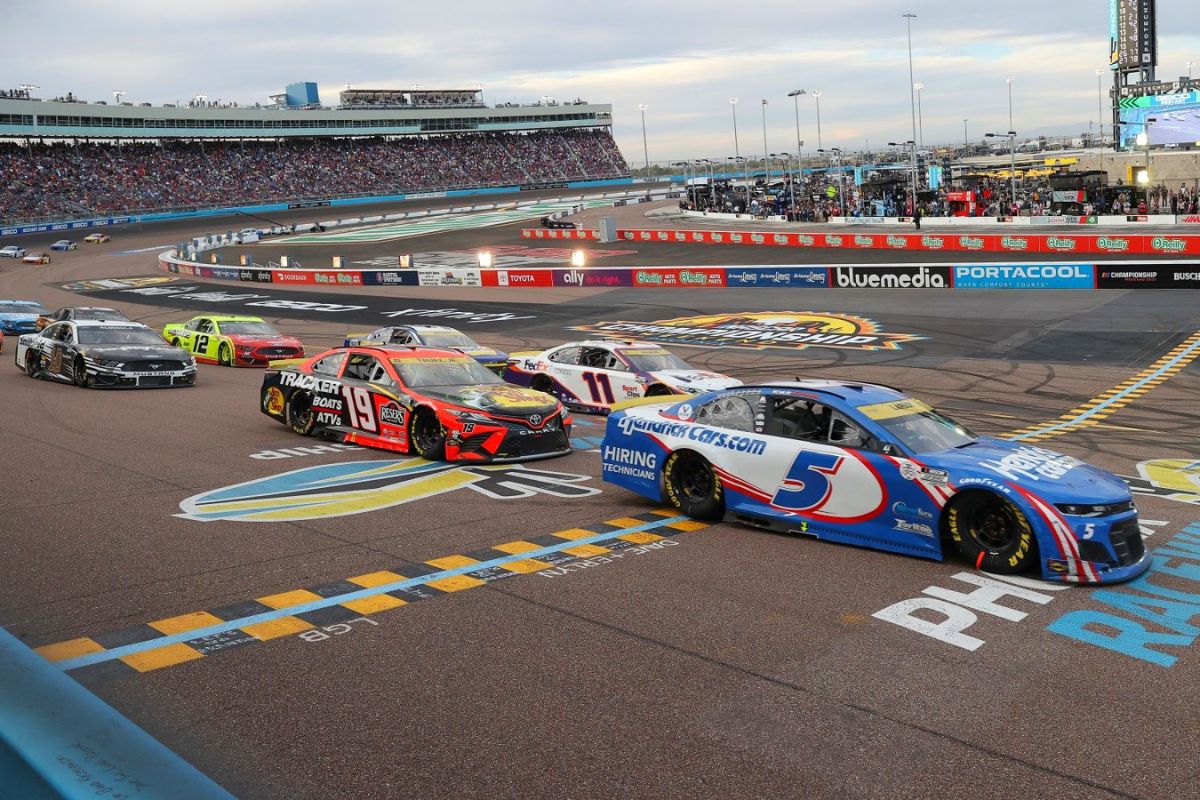NASCAR’s Engineer Reveals Phoenix Tactics: Revealing the Phoenix tactics from a NASCAR engineer’s perspective brings a new level of insight into the intricacies of racing strategy. From navigating the Dog Leg Drama to mastering Mario Kart-style restarts, there is a wealth of tactical knowledge waiting to be explored.
The spotters’ difficulties and the innovative solutions devised, along with the strategic implications of violations and pit road maneuvers, shed light on the complexities behind every move made on the track.
As the curtain is lifted on these best-kept secrets, a deeper understanding of the shifting dynamics and evolving racing lines emerges, leaving the enthusiasts eager to unravel more intricacies of the racing world.
The Dog Leg Drama and Mario Kart-Style Restarts
The integration of Phoenix Raceway’s unique ‘dog leg’ front straightaway, reminiscent of Suzuka’s 130R, introduces a dynamic element to NASCAR racing tactics. This feature challenges drivers to strategize not only for speed but also for positioning, as the paved apron in the dog leg offers a risky yet rewarding shortcut akin to something out of a Mario Kart race. The disregard for track limits in this section adds an exciting twist to the competition, forcing drivers to decide between taking the traditional racing line or opting for the high-risk, high-reward shortcut.
During restarts at Phoenix Raceway, the ‘dog leg’ becomes a focal point of intense action. Cars fan out, going six or seven wide as they battle for position through this unique section of the track. These moments of chaos and excitement have become iconic in NASCAR history, showcasing the skills and bravery of drivers who must navigate this challenging portion of the circuit while under immense pressure from their competitors. The ‘dog leg’ drama and Mario Kart-style restarts at Phoenix Raceway provide the fans with thrilling displays of skills and strategy, making it a highlight of the NASCAR calendar.

Spotters’ Conundrum and Tactical Solutions
Navigating the complex dynamics of Phoenix Raceway’s spotter’s stand during intense restarts poses a significant challenge for the NASCAR teams. The spotter’s stand situated at the top of the grandstands in Turns 3 and 4 creates communication hurdles during restarts due to the fanning out of cars and the convergence into the first corner. To tackle this challenge, teams often employ visual aids like tape on the mirrors to assist the drivers in making split-second decisions as they navigate the tightly contested first corner. The viewpoint from the spotter’s stand and the unique track dynamics at Phoenix Raceway make the spotters’ tasks especially demanding.
- Heightened Communication Strategies: Spotters must develop clear and concise communication methods to guide drivers through the chaos of restarts.
- Visual Tools Utilization: Visual aids, such as tape on mirrors, play a crucial role in assisting drivers in making strategic moves during restarts.
- Strategic Positioning: Spotters strategically position themselves in the stand to maximize their view of the track and provide accurate guidance to drivers.
- Adaptability and Quick Thinking: Spotters must remain agile and think on their feet to help drivers navigate the challenges of restarts effectively.
Restart Violations and Pit Road Strategy
Amidst the high stakes of NASCAR racing at Phoenix Raceway, restart violations and pit road strategy emerge as pivotal factors shaping the outcome of races. Phoenix Raceway is infamous for restart violations, where drivers attempt to gain a strategic advantage by cutting the dog leg. While this can provide an initial boost, the compromised corner entry upon re-entering the racing surface often nullifies the advantage gained. The risks and rewards of this tactic are carefully weighed by the drivers and teams.
The curved nature of the pit road at Phoenix presents another challenge for competitors. Calculating pit road speed with precision is crucial to avoid penalties, especially without the aid of speed limiters. Pit road strategy becomes a delicate dance of timing and accuracy, with teams strategizing on when to pit and how to navigate the unique pit road layout effectively.
| Restart Violations | Pit Road Strategy |
|---|---|
| Cutting dog leg for advantage | Calculating pit road speed accurately |
| Risks and rewards | Navigating the curved pit road |
| Impact on corner entry | Timing and precision in pit stops |
Shifting Dynamics and Racing Lines
In NASCAR racing dynamics at Phoenix Raceway, the strategic utilization of shifting and racing lines emerges as a pivotal aspect influencing driver performance and cornering efficiency.
- Shifting Techniques: In Phoenix, drivers strategically shift down to 3rd gear in Turns 3 and 4 during green flag runs to combat lap time degradation. This technique provides additional deceleration and torque for improved corner exit.
- Cornering Optimization: Drivers experiment with different racing lines, playing with entry points and utilizing residual PJ1 resin on the track surface. These variations aim to optimize cornering speed and overall performance.
- Decisive Decision-Making: The choice between maintaining speed through a wider line or sacrificing speed for a tighter line can make a significant impact on lap times and race positions.
- Adaptability and Precision: Successful drivers at Phoenix showcase the ability to adapt their shifting patterns and racing lines based on track conditions, tire wear, and competitors’ strategies to gain a competitive edge.
News in Brief
Phoenix Raceway’s unique dynamics, including the ‘dog leg’ drama and Mario Kart-style restarts, add thrilling dimensions to NASCAR tactics. Navigating the spotter’s stand challenges teams during intense restarts, requiring heightened communication and visual aids. Restart violations, cutting the dog leg for advantage, and pit road strategy become pivotal, influencing race outcomes. Shifting dynamics and racing lines at Phoenix involve strategic gear shifts and cornering optimizations, showcasing drivers’ adaptability and precision. The complexities behind every move on this distinctive track provide fans with a deeper understanding of NASCAR’s strategic intricacies.

Our Reader’s Queries
Q: Who is favored to win Phoenix Nascar race?
A: The green flag is set to wave at 3:30 p.m. ET on Sunday, with Larson leading the pack as the 11-2 favorite in the 2024 Shriners Children’s 500 odds. Following closely are last year’s NASCAR Cup Series champion, Ryan Blaney (7-1), and Byron (15-2), according to the 2024 NASCAR at Phoenix odds.
Q: When did Nascar come to Phoenix?
A: NASCAR initiated racing at Phoenix International Raceway in 1978. The following year, in 1979, marked the debut of the inaugural CART race, the Arizona 150, claimed by Gordon Johncck driving a Penske PC6/78. However, it wasn’t until 1988 that NASCAR’s premier series, now known as the NASCAR Cup Series, commenced racing at the track.
Also Read: Bubba Wallace’s Vegas Race Nightmare: Pitstop Secrets Unleashed!

